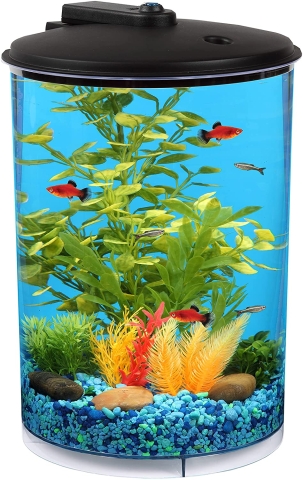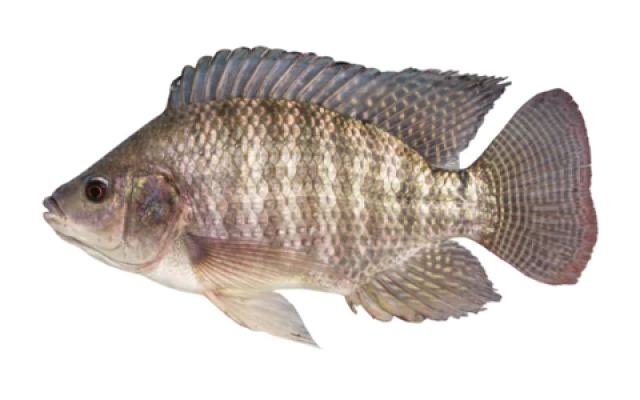Fish Management
`⊱⊱
⊰⊰ Give a Man a Fish and He will Eat for a Day ⊱⊱
⊰⊰ Teach a Man to Fish and He will Eat for a Lifetime ⊱⊱
⊰⊰ Enable a Man to Raise Fish and He will Feed a Village for an Eon ⊱⊱
ONE OF THE MOST ancient yet innovative farming concepts is Aquaponics. Aquaponics can be  done on a small scale on your desk or in your living room. It can be done on a huge scale in a massive greenhouse or even outside in temperate climates.
done on a small scale on your desk or in your living room. It can be done on a huge scale in a massive greenhouse or even outside in temperate climates.
FISH MANAGEMENT is the single most important aspect of Aquaponics success. In a self sustaining farming operation, aquaponics can play a vital role. When raising fish, water quality can mean ...
the difference between life and death. An understanding of fish tank health, water quality and filtration setup will enable your fish to help you potentially quadruple your production of vegetables, fruits, and herbs versus conventional farming methods. See below for types of Fish best suited for Aquaponics systems
**DO NOT use  decorative fish tank chemicals with this system. Use all natural products for maintaining the PH level in your system. Baking Soda works perfect for raising PH. But word of advice - a very tiny amount of baking soda in a 20 gallon system will raise the ph quickly. Click the image to the right to learn about nutrient availability based on PH levels in Aquaponic systems. With our fish tanks, we found that a pinch of baking soda scattered across the top of the water, raised the ph significantly.
decorative fish tank chemicals with this system. Use all natural products for maintaining the PH level in your system. Baking Soda works perfect for raising PH. But word of advice - a very tiny amount of baking soda in a 20 gallon system will raise the ph quickly. Click the image to the right to learn about nutrient availability based on PH levels in Aquaponic systems. With our fish tanks, we found that a pinch of baking soda scattered across the top of the water, raised the ph significantly.
ESTABLISHING your fish tank is step one. Once you have purchased and setup your tank system (whether 10 gallons for growing herbs to 500 gallons for fish farming and feeding large garden plots or greenhouses), you'll follow the same steps:
- Set up the tank according to the instructions
- setup the filter system of the tank, including any media on the bottom (large river pebbles work best so they dont get sucked into the filter system)
- fill the tank with non chlorinated water (either rain or well water works best, distilled if other options are not available) Do Not Use dechlorinators unless they specifically state that they are safe for edible fish.
- setup the oxygenation system (bubble stones, fountains, the filter/pump and air pumps as needed
- Turn on all the systems and allow the tank to cycle for 2 to 3 weeks in order to go thru the Nitrogen cycle completely. During this period, add only a very few fish. Note: as this is a high stress period and the water is not properly prepared, expect some mortality among these early fish, however avoid using feeder fish for this time frame as they tend to carry a lot of disease and will contaminate your entire system. Plants can be added after the first week to aid in the cycling.
- Do not be concerned if your tank water becomes very cloudy during that first week and doesnt clear up for several days - that is called Bacterial Bloom and is a good sign.
- When your tank water clears up, you can add many more fish. The old adage "1 inch of fish per gallon of water" applies on new aquaponic systems however, once the system is established and effectively filtering fish waste, then many more fish can be added. The plants will be happy to pull all the nitrites, nitrates and ammonium out of your circulating water.
THE KEY TO successful Aquaponics farming is to be a successful fish keeper. Sometimes practicing with a small decorative tank can be a good way to learn and understand aquaculture. Decorative tanks are also good for quarantining new and sick fish. So you may want to keep one setup and maintained for those instances. A sad thing I heard at the petstore one time was a man telling his child "just get a goldfish, they dont live that long" and I was shocked that A) what is this man teaching his child and B) Gold fish can live a very long time if they are cared for properly.
ONE GOAL of this site is to teach proper animal and land management techniques and strategies. Most people are not aware of their impact and how the tiniest creature can have a purpose. We bought feeder fish for a very old Oscar fish. He wasnt interested in them and they lived to be 6 years old when our Oscar died at the age of 14. We sold the fish tank equipment on to another fishkeeper. I dont know how long the fish lasted after that, but I do know they were 6 years old at that time.
CYCLING YOUR system can be a little challenging at first. When setting up a new system, the ph will fluctuate wildly during the cycling process, so much that it will not be safe to introduce fish for at least 6 weeks. Click the image to the right for a video
|
Fish Tank - 20 Gal Aquarium KIt |
||
Cylindrical Fish Tank |
Heavy Duty 4 Shelf Unit |
4 Gal Fish Tank |
|
Submersible Water Pump 1110 GPH |
API Freshwater Master Test Kit |
Complete Aquaponics System |
THERE ARE multiple different types of fish that can be used in the Aquaponics system, depending on whether you choose to harvest the fish or are going to be using ornamental fish breeds. information on fish breeds and fish management. The images below are aritlce links for information about each type of fish and how they might be useful in an aquaponic system.
Little known spawning facts about the fish below:
- Tilapia Moms carry their babies in their mouth, so you'll need to be careful not to harvest the female fish, especially after they've spawned as she will be incubating her young in her mouth and will not be eating.
- Yellow perch are difficult to raise eggs and larvae so most people purchase them as fingerlings.
- Male bass build the nest, protect the eggs and protect the fry after they are born.
- Crappie are known for their veracity and will aggressively attack almost any other breed of fish, in captive conditions especially when they have spawned.
- Green Sunfish wont spawn until water is above 70 degrees
- Male Catfish (like Bass) build the nest, protect the eggs, fanning them with their fins to circulate water and protect the frye, however unlike Bass, catfish wont eat during this timeframe as they take their parenting duties very serious, not allowing for distractions. They are very good Daddies.
Tilapia |
Yellow Perch |
Bass |
Crappie |
Green Sunfish |
Catfish |











